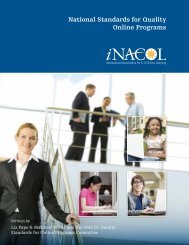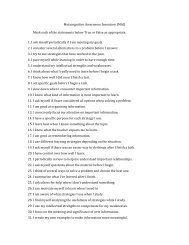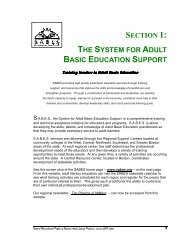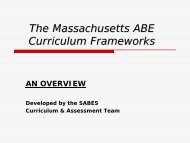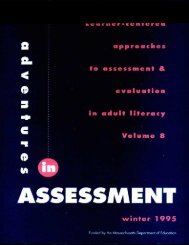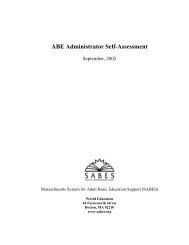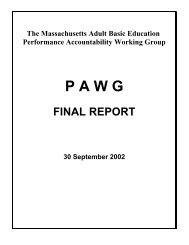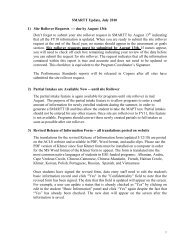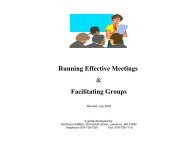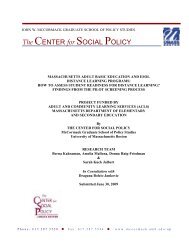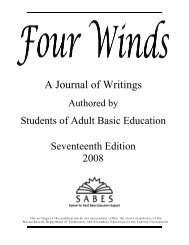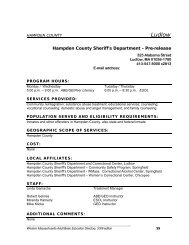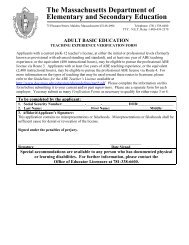Integrating Career Awareness into the ABE/ESOL Classroom - SABES
Integrating Career Awareness into the ABE/ESOL Classroom - SABES
Integrating Career Awareness into the ABE/ESOL Classroom - SABES
- No tags were found...
You also want an ePaper? Increase the reach of your titles
YUMPU automatically turns print PDFs into web optimized ePapers that Google loves.
L e s s o n 1 9<br />
Financial Aid Resources<br />
Learning Objective<br />
To help students learn about options for paying for fur<strong>the</strong>r education<br />
Materials Needed<br />
TERI handouts from www.tericollegeplanning.org<br />
Vocabulary<br />
financial aid, loans, grants, scholarships, work-study<br />
SCANS Competencies<br />
Basic Skills: Reading<br />
Thinking Skills: Decision making; Reasoning<br />
Instructions for Conducting <strong>the</strong> Activity<br />
Explain that when making career choices, you need to identify what additional education and/or training you may need<br />
and how you will pay for it. Students need to be able to balance education, work, and o<strong>the</strong>r responsibilities. Note that <strong>the</strong>re<br />
are many options for how students integrate fur<strong>the</strong>r education <strong>into</strong> <strong>the</strong>ir lives.<br />
Brainstorm with students <strong>the</strong> variations of going to school and working. Ask students to think about how <strong>the</strong>y or <strong>the</strong>ir<br />
friends and relatives have juggled going to school with o<strong>the</strong>r responsibilities. The list should include:<br />
• Going to school full-time and not working<br />
• Going to school full-time and working part-time<br />
• Going to school part-time and working full-time<br />
• Going to school part-time and working part-time<br />
Ask <strong>the</strong>m what <strong>the</strong>y might need to consider when making <strong>the</strong>se decisions. The list might include:<br />
• How supportive and flexible is your employer?<br />
• Can family and friends help take on some of your responsibilities to give you time to do this?<br />
• What financial resources do you have? Income? Savings?<br />
• What extra or different childcare arrangements might you have to make?<br />
Explain that it is important to know what expenses you will have if you pursue higher education so that you can plan your<br />
budget. Ask students to brainstorm a list of expenses. The list should include:<br />
• Tuition and fees<br />
• Books<br />
• Supplies (calculator, notebooks, etc.)<br />
• Transportation<br />
• Computer or computer access<br />
• Uniforms (if your education or training program requires it)<br />
<strong>Integrating</strong> <strong>Career</strong> <strong>Awareness</strong> <strong>into</strong> <strong>the</strong> <strong>ABE</strong> & <strong>ESOL</strong> <strong>Classroom</strong> | Section IV, Lesson 19: Financial Aid Resources | 163



